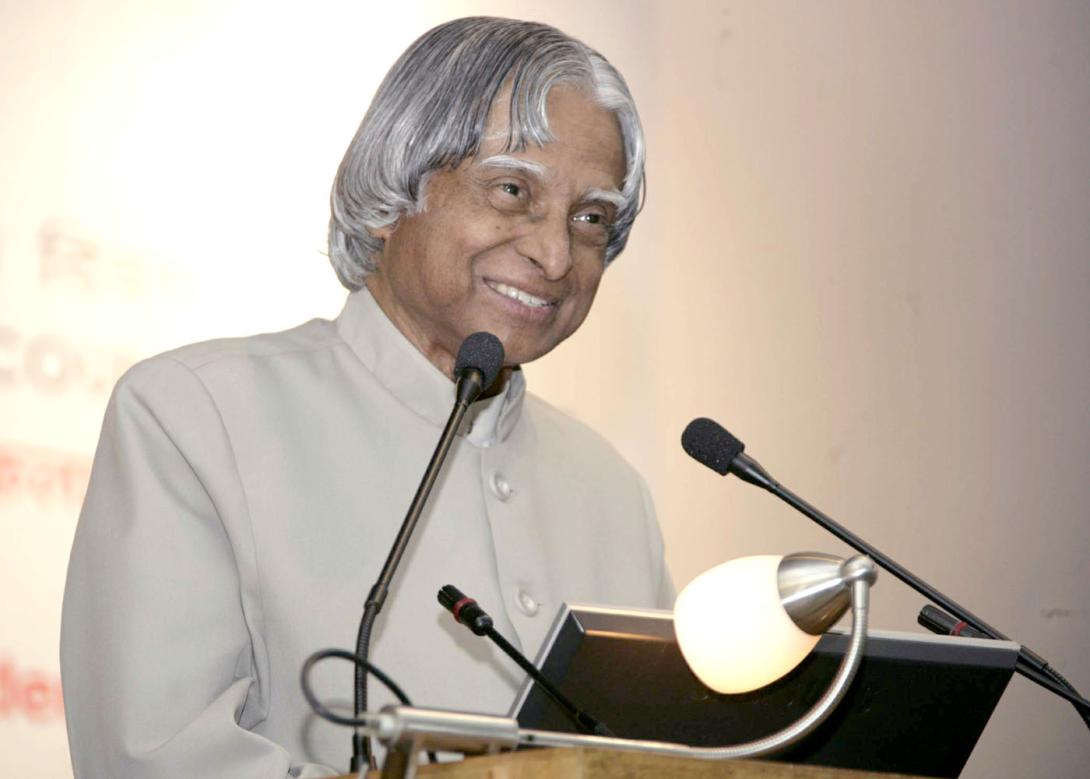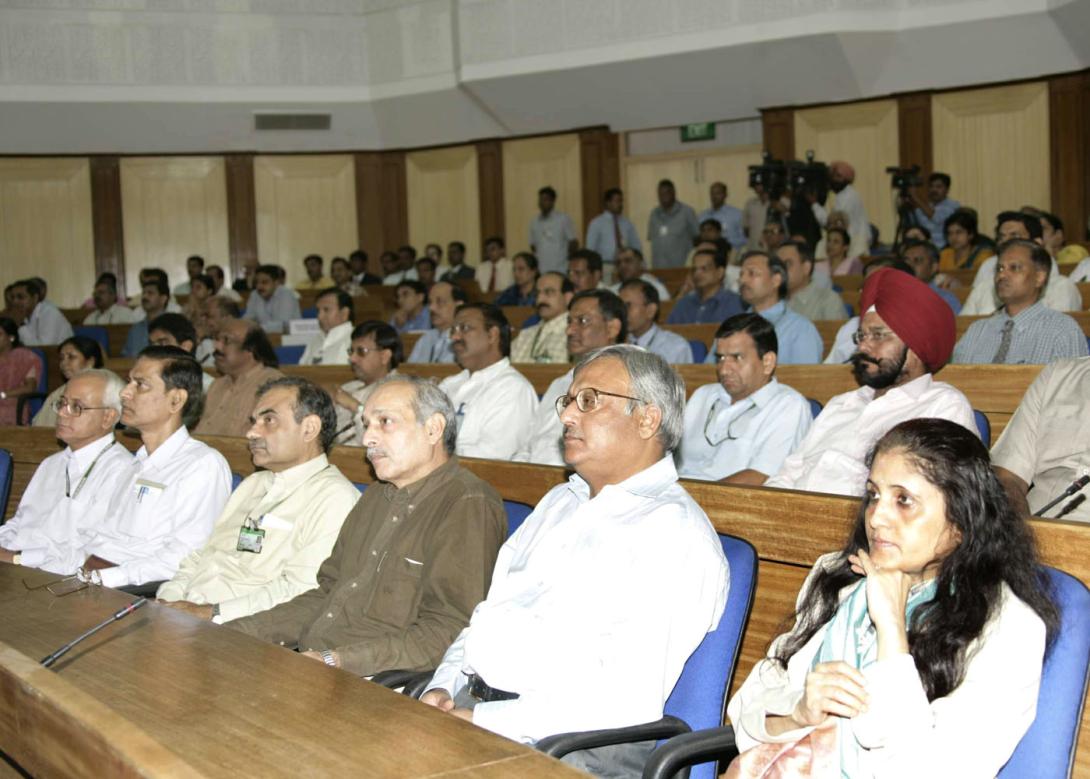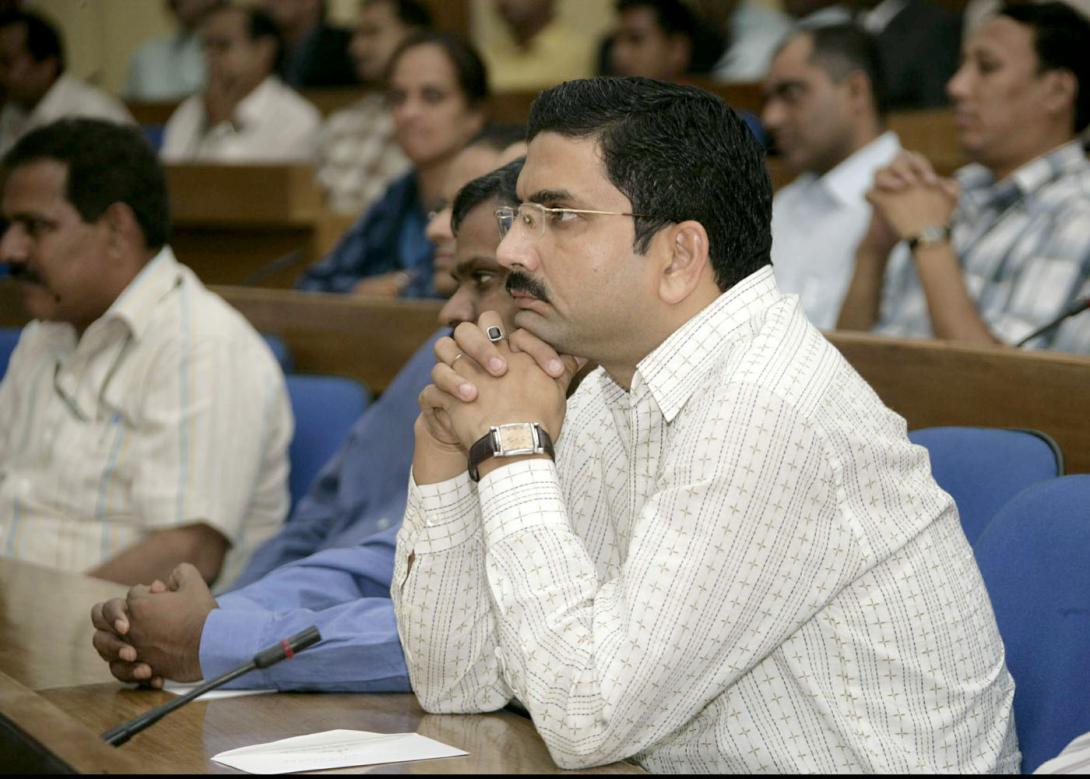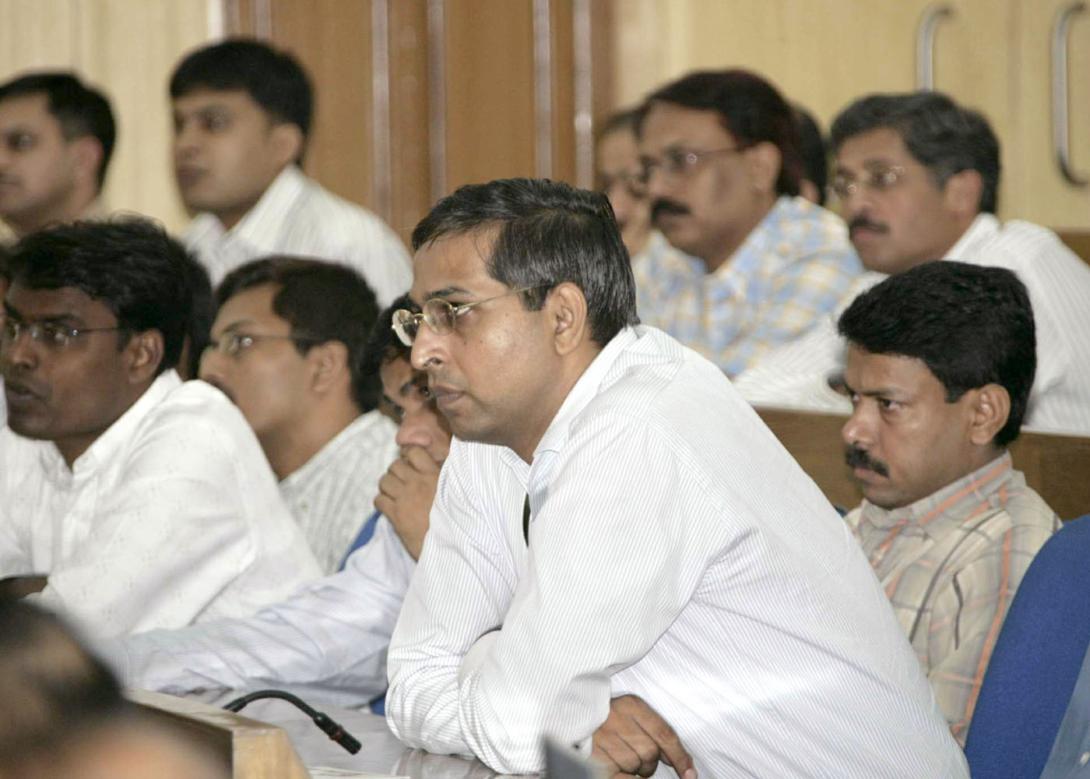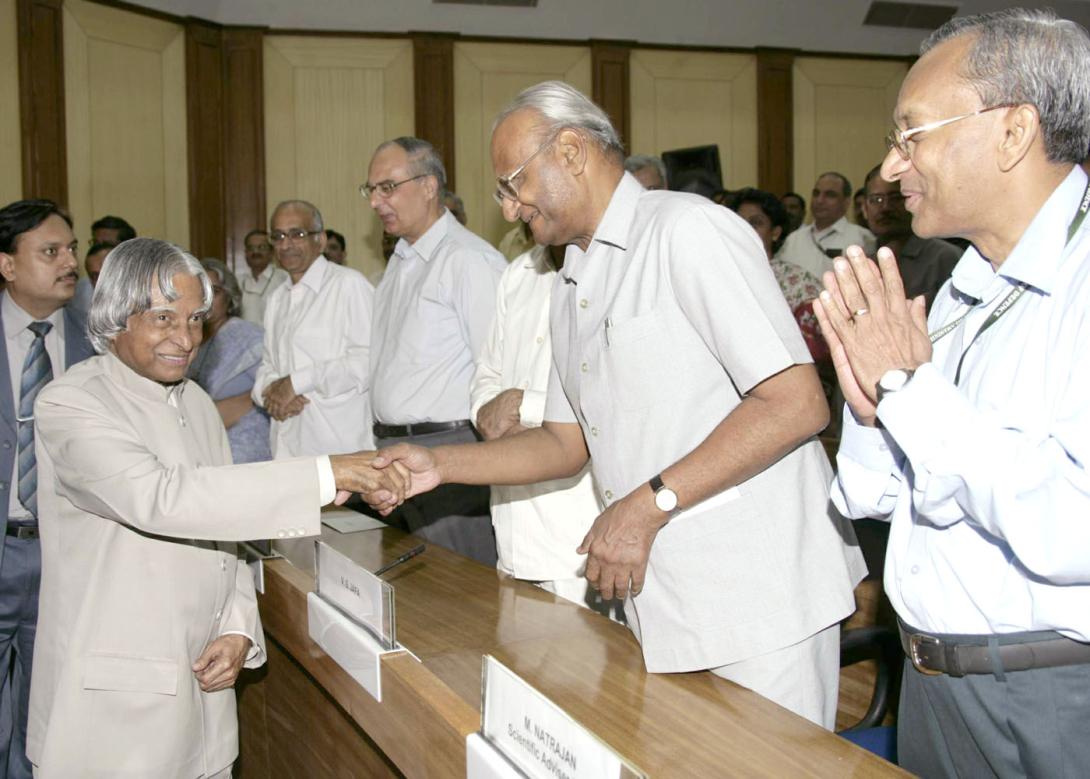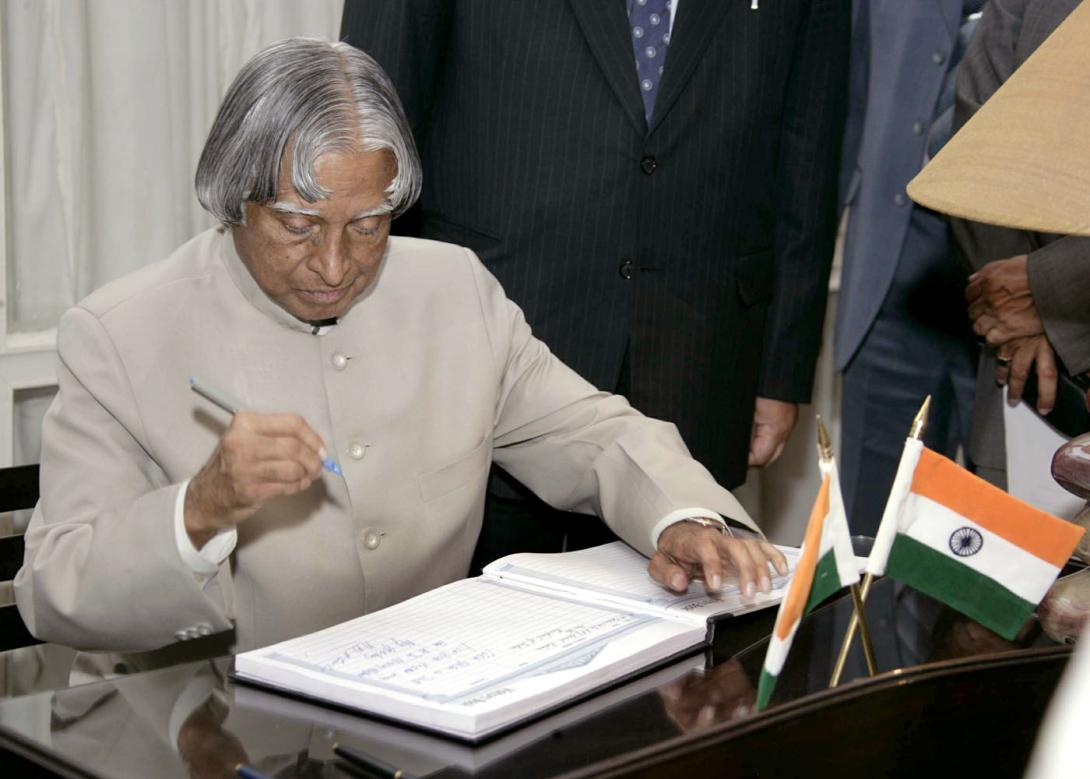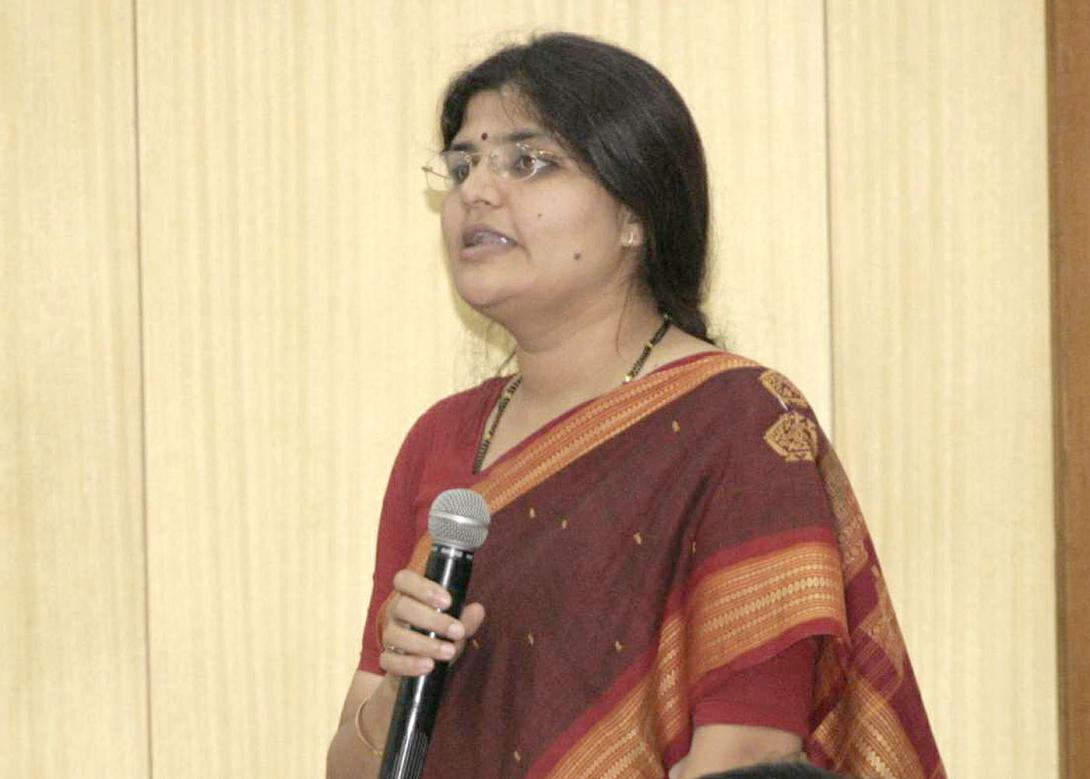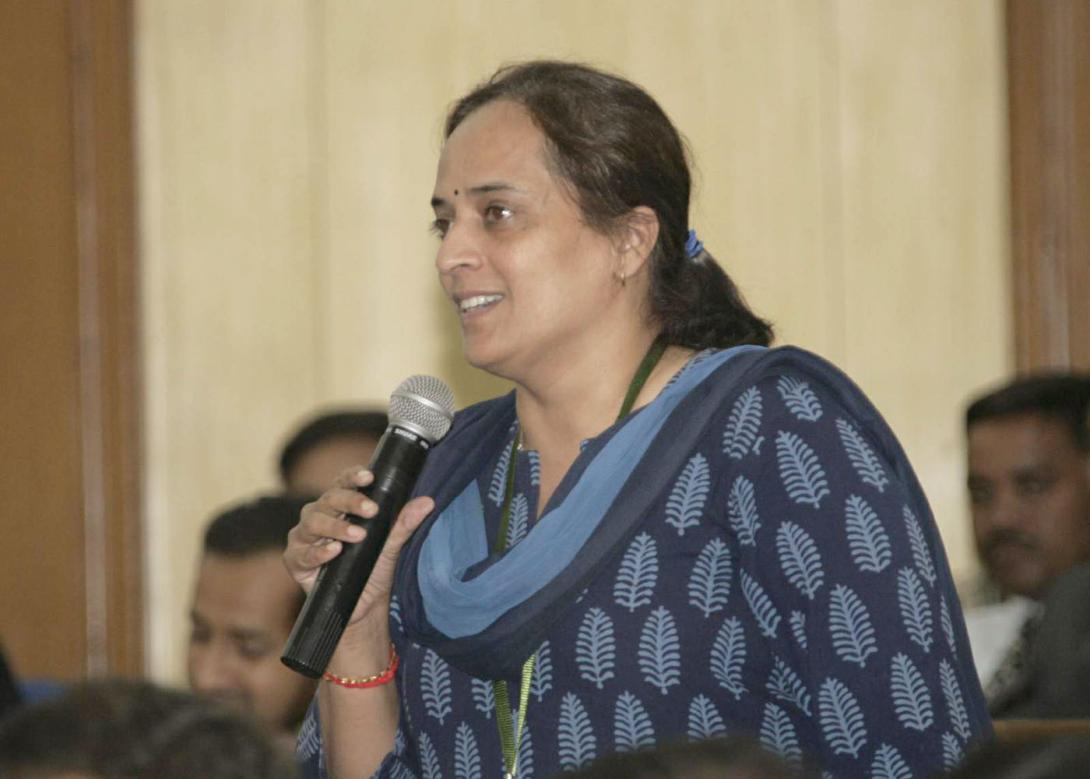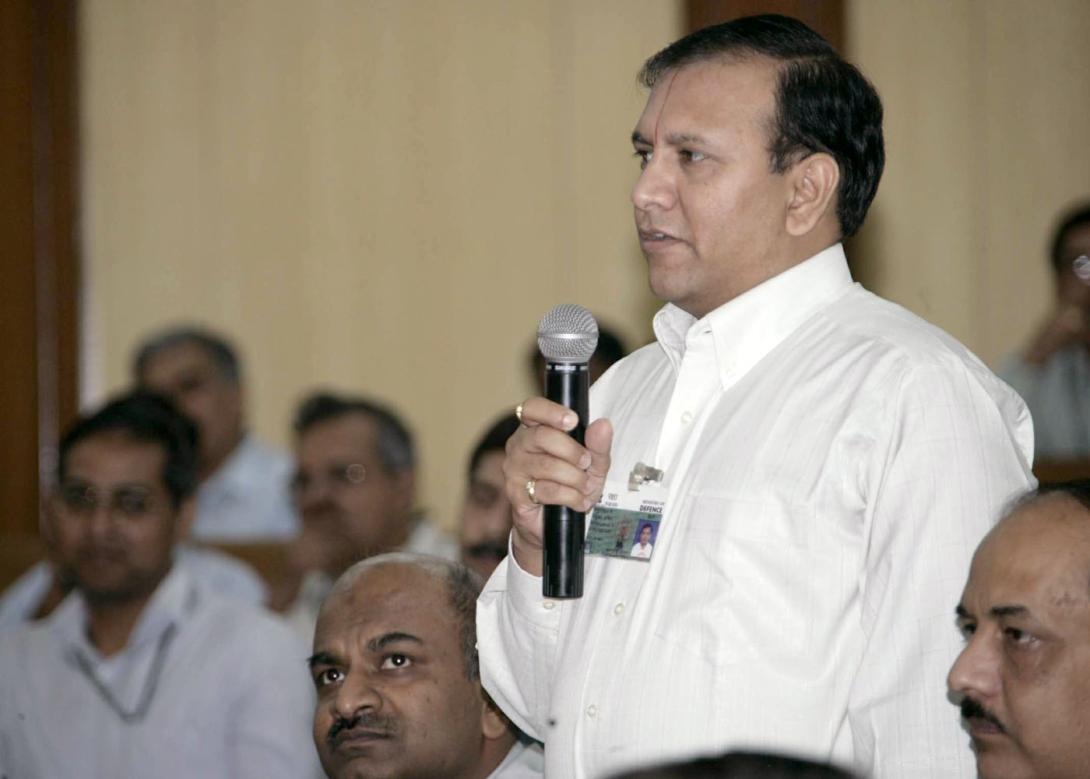Address to the Indian Defence Accounts Service (Idas) Officers at Training Division, Controller General of Defence Accounts, New Delhi
New Delhi : 09-10-2006
Transformation of Finance and Audit as Partner for Defence Missions
"Electronic governance
enables transparency"
I am delighted to address the Officers of the Indian Defence Accounts Service (IDAS). My greetings to Controller General of Defence Accounts, accountancy specialists, auditors, administrators, economic planners and the distinguished guests. While I am addressing this audience, I am aware that you are representing nearly twenty five thousand financial advisors, accountants and audit professionals engaged in planning, promoting, monitoring and facilitating operational, maintenance, research and development and production activities of the Ministry of Defence.
Indian Defence Accounts - Growth Profile
The IDAS has been continuously improving financial advise, procurement and financial management systems of defence services and they have brought in the concept of performance audit which has enabled the Ministry to realize higher value from the overall defence outlay. The study of significance of development programmes and pointing out deviations, investigating their causes and suggesting better practices have improved the performance of certain projects. Today, audit is going beyond mere economic aspects and it brings out evaluation of efficiency and effectiveness of government programmes. During peace and war, your silent and effective contributions in all fields of the Ministry of Defence are noteworthy. I have several experiences of valuable timely advice from financial experts that enabled our project teams of scientists, technologists and managers to maintain the momentum of projects. I congratulate all the members of the IDAS for constantly striving to improve the functioning of the financial management of the Ministry of Defence. Let me share with you a thought on the topic ?Transformation of Finance and Audit as Partner for Defence Missions?.
Defence accounts can become a partner of defence missions
Financial advice and audit teams can work with Programme Chiefs or Executives of defence programmes right from the inception of the project and participate in the study of the PERT of the Project. You will find that there may be ten to fifteen critical paths for a ten year programme and for five year projects it may be more. Critical paths in the project PERT will be the focused area for defence accounts. Defence accounts can definitely become a partner in the evolution of the Cost PERT for the programme. Now, I would like to discuss how effectively defence accounts participated in one of the important programmes, which went through difficult times.
Technology denial management
When I am in the midst of members of the IDAS, I would like to share an incident which took place in 1998 and our collective response. In 1992, the LCA team decided to go for Digital-Fly-by-Wire Control System (FCS) for Combat Aircraft as it is an unstable aircraft. At that time, the country did not have the experience in developing FCS. The only two countries who had the experience were France and the US. The French company (Dassaut System) had expertise in Hybrid systems whereas our need was an all Digital-Fly-by-Wire. Hence, it was thought appropriate to have a US partner who has the capability in design, development and integration of FCS on fighter aircraft. There were three candidates, General Electric Control that later became LMCS (now called BAe systems), Lear Astronics and Bendix. Finally, we chose LMCS for the contract since they had the experience in designing FCS for F-16 Aircraft. Joint Team for design and development of the FCS was formed with ADE (DRDO Labs) and LMCS. The work share between the Indian team and LMCS team was identified. Evolution of the SRS was a joint effort. The prototype flight control computer was to be done by ADE. Total system integration was a joint responsibility. Flight certification was to be provided by LMCS.
The contract progressed though a bit slowly between 1992-98. The defence finance was constantly monitoring and providing an impetus to the progress of the contract along with our technologists. Then, as you all are aware, India carried out its nuclear test on 11th May 1998. As soon as this event occurred the American Government imposed technological sanction. Due to the sanction, LMCS broke the contract and retained all the Indian equipment, software and the technical information which were in their premises.
This was definitely a shock for the Indian team. Immediately, I called for a meeting of Directors of ADA, NAL, ADE, CAIR, HAL, National Flight Test Centre, Prof I.G. Sharma, a renowned control system specialist, Prof Goshal, a noted digital control system expert and guidance and control specialists from DRDL and ISRO along with our financial advisors. The FCS team explained to these members the situation arising out of the unilateral termination of contract by LMCS. Finance team participated in all the discussions. We had a full day discussion on the methodology, which now needs to be followed, by which we can successfully complete the development of digital fly wire system and fly the LCA. The team after prolonged deliberations gave a structured method by which the development can be completed and the system can be certified for flight trials. They also mentioned that they will support the programme in whatever capacity they have to work with the ADE and ADA teams. Financial advisors of DRDO and ADA came forward to provide all financial support to the development tasks. They also undertook to take appropriate action against LMCS for unilateral termination of the contract.
Based on the recommendations of the specialists we immediately strengthened the ADE software team with an additional ten experienced software engineers from ADA. ADA was given the responsibility of verification and validation of software. The integrated flight control system review committee was constituted with Director (ADE) as Chairman and PGD (ADA) as Co-chair to support development and resolve all the conflicts arising between Control Law Team, Iron Bird, Software, Hardware and simulation. This team met once in a week and brought out all the issues arising in different work centres and solutions were found. In addition, an Iron Bird review team was formed with Project Director Flight Control System as Chairman with members from HAL, ADA, ADE, certification agency (CEMILAC) and Test Pilots from the National Flight Test Centre as Members. This team also met every week and resolved all the problems arising in the development and Tests on Iron Bird. We also introduced participation of certification agency (CEMILAC) and inspection agency (CRI) in all these reviews. The aim was to see that any problem in any system is brought into focus at the earliest so that the solution can be found. In addition, we made it a point to have a special agenda in the monthly technical committee meeting on the development of integrated flight control system wherein Director (ADE), Director (NAL), Director (National Flight Test Centre), General Manager (HAL) presented the progress and problems. The confidence building took place by intensifying the tests. For example informal Iron Bird test was carried out over thousand hours and the formal Iron Bird test was conducted over hundred and fifty hours. Similarly, the pilot flew the simulator for more than two thousand hours. Thus, what we missed from the foreign partner, we compensated by enhancing the critical design review and increasing the test time to ensure safe man rated design of the integrated flight control system.
The entire team took the denial as a national challenge. They said if it were going to take three years we would do it in two years. If it is going to take twenty million dollars we will do it in ten million dollars. Our working hours was not eight hours. We will work twenty-four hours a day and complete the task. That is the time I realized the power of Indian Scientific Community, partnership of defence finance and the power of our country. I realized that no country could dominate us by imposing technological sanction or economic sanction. The collective power of scientific, managerial and financial management team will defeat the challenges from any nation. Today I can proudly say that our scientists have designed, developed, tested, evaluated, and integrated the integrated flight control system in the LCA, which has logged more than 600 trouble free flight sorties in four different aircrafts. The fifth aircraft is getting ready to join the fleet. The challenge of the development is that the aircraft of this class is being designed for the first time; we introduced the state-of-the-art digital fly by wire technology in the very first prototype, which is unstable. We on our own developed the final hardware and software required for testing and evaluation of the control system in the aircraft, after the foreign partner leaves the scene and our own certification team which had no experience in certifying fly by wire aircraft, gains confidence and certifies the aircraft as flight worthy. Above all, the pilots who have never flown a prototype, which is unstable with a fly by wire system confidently, flew the aircraft based on their flying experience in the simulator and the Iron Bird. Honest self-assessment, identification of area of uncertainty and all out effort to solve the problem were an important aspect of this programme. Integrating the strength of industry, R&D labs, academia, Air Force and defence accounts helped us to achieve, what was perceived to be an impossible task. This is a demonstration of the Indian will that ?we will win?. It is indeed a team work in a crucial period of LCA development, with the active partnership between scientist, technologists, finance and users. Now, LCA will enter into production phase.
Important Partnership of Defence Finance in LCA
In respect of LCA, I would like to mention another important feature. As you may be aware, the full scale engineering development Phase I of the programme was sanctioned at a cost of Rs. 2188 crore While sanctioning the programme in 1993, we envisaged building two prototypes only namely TD-1 and TD-2. Later, the ADA team in partnership with finance revised the programme by increasing the number of prototypes from two to four. This was acclaimed as one of the very important milestones for LCA and the people who participated in this great work were Shri K.P. Rao, Shri R. Ramanathan and Shri Siva Subramaniam. This could be achieved because of the online collective decision making system instituted by them for the programme. During the commencement of the programme many items were proposed to be imported. While progressing the programme the project team in consultation with finance resorted to indigenous development and manufacture of those items leading to substantial savings in cost. Also, the CFC Wing programme was contracted for half the planned amount through hard negotiations. In all these areas, there was excellent partnership between scientists, technologists, user service and finance. In the LCA management system, Secretary (Defence Finance) is a member both in the general body and in the governing council. The Additional (Finance Advisor) from DRDO is the member in the Technical Committee. This close knit system has enabled the indigenous programme to come to this stage today.
Efficacy of Close Loop Guidance and Control
Let me give you an event based experience of the missile programme which has similarity to the mission of defence accounts. When I see the role of financial advice, audit and corrective action needed in the financial management field, I am reminded of technical events taking place in sequence in the case of flight trajectory. Let me refer to the launch of the Agni missile system. It is a controlled and guided flight from the time of launch till it reaches the target at long range. At t=0, the time of launch, automatic launch control system gives the take off signal, after testing more than 600 parameters in few seconds. If all the parameters are within the specified error band, computer gives a go-ahead signal. The missile lifts off. The missile has an onboard computer that carries the specified trajectory which is to be followed by the missile from the time it lifts off till it reaches the specified impact point. Any deviation from the trajectory is detected and quantified by the computer and fed continuously to the control system of the missile. The control system operates the fast reaction thrusters in all the three axes of flight and corrects the deviation and brings the missile to ride on the required trajectory in real time. If the corrective action is not done in real time, the missile will reach far away from the target and the mission will be a failure. Guidance and control with its onboard computer acts as the brain of the missile. During the flight of the missile, it is essential to guide the missile to the target to meet the mission requirements and succeed. From this guided missile flight example I would like to share the following experience.
As you can see, if the correction is provided after the event is over, the mission will not succeed. Similarly, if the financial advise is delayed and auditors audit after the event is over or the mission is completed they will see many deviations but they are too late to correct. I am sure you can realize the importance of providing online financial advise and corrections to the deviations to ensure successful accomplishment of the mission for the given cost, time and performance.
While I am on this topic, I would like to mention another important financial decision making which took place in the year 1989 that led to concurrent R & D and current production. At that time we had just conducted only one successful flight test of ?Prithvi?. When the project team met Shri A.K. Ghosh, the then FA (DS), in spite of financial constraints for various activities in the defence budget, he found the funds for concurrent production of the Prithvi system in the right time. This was a major breakthrough in the missile programme. Today two strategic missiles are in production because of the right type of design and strategic advice from finance.
Financial Advise and Audit: Partners in E-governance
The application of ICT into financial advice and audit system should enable financial advisors and auditors to ensure that process controls mechanism are built into the auditing system. This system would ensure that the performance matrix of various domains such as strategic planning, project management, operational management, risk management practices, business continuity planning, quality of service delivered, customer satisfaction are met. Also it should meet the desired objective of the Government and the public sectors. If auditors associate themselves with executives in their e-governance or IT related programmes then it provides credibility and assurance to the stakeholders (in our case the members of the Armed Forces) about value for money. The defence accounts team will also be assured of security within the system, compliance of standards, existence of proper process controls accuracy and integrity in the output.
E-Governance Grid for Auditing
I have noticed a press report mentioning about the ten best government intranets in the world. I found that the Defence, Finance and Accounting service of the US finds first place in this competition. I am sure with core competence available in the country both in the IT sector, finance and accounts, Indian defence finance can definitely aspire to become the best intranet in the country and why not in the world? You can think of establishing a secured CGDA e-governance grid through VPN broadband network with your clients namely the Army, Navy, Air Force, Defence R & D and the Department of Production and Supplies. In an IT enabled environment, a near paperless accounting system which hinges on electronic cash and credit card transactions including authenticated and secure digital signature will have to become a part and parcel of the business of CGDA. Today in our computerization attempts the paper trail is still maintained for fear of mistrust and untested authentication mechanisms in the world of computers. Hence computerization has merely become entry of paper transactions on the computers. This has to be changed in such a way that the transactions are born digitally and automatically captured; we should spend more time on thinking rather than data entry. Hence the fusion of ICT and auditing is essential with digital signature in primary key infrastructure environment. When banks and the commercial establishments are now engaged in the e-commerce transactions in India, I do not visualize any difficulty in implementing a similar scheme by defence accounts specialists with qualified encryption standards. In this connection, I would like to suggest CGDA to consider issuing of credit cards to units and establishment for managing their cash assignment and imprest account.
For enabling e-audit through the e-governance grid the ICT tools needed for quality control, e-auditing system, project management, change management, risk assessment and control, human resource planning, implementation of near paper less office work flow system and performance tracking system are essential. This will enable the audit team to provide online process control through monitoring of time PERT, cost PERT and the performance PERT and recommend suitable corrective actions for meeting final project goals to all your clients when the process in progress. This type of paradigm shift in the approach through auditing will make the institution of CGDA a partner in all our time bound defence programmes.
Audit in the world of e-procurement
Our audit system has grown with checks and balances and has evolved over many years. But things are changing. The world is fast embracing e-procurement and very often one has to deal with faceless entities such as a web site. In this world of e-procurement, both good and the evil coexist. While the advantages of speed and efficiency cannot be questioned, frauds are also equally possible. Money can be transferred at blinding speeds and often without an acknowledgement or a trace. In India, e-procurement is in a nascent stage, but would very soon become a major part of our transactions. It would be necessary for auditors and accountants to generate a policy statement on best practices for e-procurement for defence services in consultation with experts.
Conclusion: Suggestions to the members of CGDA
The members of the Defence Accounts Service have been contributing to the growth and the maturity of the governance system of the defence ministry during the last two hundred and fifty years. For enabling members of the CGDA to become partners in national security, I would like to make the following five suggestions for your consideration.
1. Is it right to allow audit queries to graduate into audit paras and audit paras transforming into oral evidence before PAC?. I am sure with an intensive partnership between user, defence R & D, defence production and supplies, defence finance and C&AG, we can think of an online real time, deviation detection mechanism for resolution of procedural errors cropping up in the system. Here, I would like to give an example. When I took over DRDL in 1982, there was over 1500 pending audit queries, more than twenty audit paras with many of them having the potential to become oral evidence cases by PAC. CAG, myself, CGDA and 54 members drawn from scientists, defence accounts and CAG worked for three days, studied all the files and asked for clarifications. It was found that in some cases the technical teams had not explained the problem to the audit team properly and in some cases the audit did not have the full understanding of the technical necessity. After clarifications and discussions, the task team reduced the number of audit queries to less than 10 and audit paras went into revision. This shows how intensive partnership between finance, audit and users can create a robust error free management system in establishments.
2. Defence accounts, is a service organization. The service providers have the responsibility to provide full satisfaction to clients or customers who in this case happened to be the services. The total CGDA system must be designed to provide customer satisfaction with high degree of effectiveness and efficiency and minimum wastage. This I find is happening. When I went to Siachen, I was told that pay requirements of jawans was paid exactly on the first of every month. Also, pensionary benefits of a soldier are being paid on the day the person goes on retirement.
3. Defence accounts can assist service establishments and production agencies in disposing off certain inventories of systems of old technologies. Continuous retention of these systems of old technologies will involve inefficient use of the existing human resource and come in the way of the growth of the organization. Some of the examples are use of manual drafting system and conventional lathes and milling machines vis-�-vis modern CAD/CAM system, which will enable direct drafting and feeding of the component into the machine for realizing the product.
4. With ICT playing an important role in every sphere of organizational activity, CGDA may consider introduction of electronic filing of claims by service personnel and establishments. To start with TA / DA claims, LTC, provident fund advance could be introduced.
5. There are number of financial advice, accounting and auditing organizations in the country both in the private and public domain. It might be useful to create a common platform among all these organizations to know innovations made in different organizations. CGDA may take the initiative of creating such a forum where the specialists from different organizations can work together and evolve areas, which can be emulated by sister organizations. This interaction and interchange of ideas will enable enrichment of all organizations through cross fertilization of ideas.
My best wishes to all the members of the Indian Defence Accounts Service in their mission of providing quality financial management support to the national security system of the nation.
May God bless you.
Question and Answer Session
1. Sir, you have given vision 2020 to the Nation; how can we achieve that vision? What role we can play in DAD to contribute in achieving this noble vision?
- Smt Richa Misra, Jt. IFA
Ans: Your question is indeed very important.
Defence Ministry is one of the organization with a large expenditure budget. Also we have seen that defence R & D, defence production, defence training centres and maintenance centre are having huge capacities. Every year, the Department of Defence Production through its defence production centres and ordnance factories produce billions of dollars worth of product and systems for the country. Time has now come in for removing the so called veil of secrecy and aggressively market certain products, certain systems, certain training and maintenance packages in the international market. Defence products have to be marketed through public-private partnership enterprises. DAD has to evolve a methodology and participating in marketing defence products in the international market. Since the defence budget is more than 20% of the national budget, defence ministry has the responsibility of aggressively marketing the defence systems in the international market and reduce the financial burden. This in turn will assist India Vision 2020.
2. Sir, India has emerged as the hub of Information technology yet its application in the Government sector especially in public perception leaves a lot to be desired. what is your advise to the Defence Accounts Department in particular and Government Departments in general to enhance the usage of the tools of information technology in their areas of functioning?
- Kumari Mala Iyengar, Sr. Dy. CGDA
Ans: I have already discussed e-governance grid for auditing. More files lead to more delay. More individuals dealing with the files lead to less transparency. IT gives transparency, efficiency and fast decision making. I have already given the details of areas in which DAD should take initiative in applying information technology tools.
3. Sir, with the enhanced delegation of financial powers to the services the role of financial advisers has assumed importance. What is your advise to the financial advisers for achieving the ?Best value for Money? making their contribution more meaningful?
- Smt Shashi Bala Srivastava, Sr. Dy. CGDA
Ans: Finance advisors have to transform themselves into system finance managers. That means instead of looking at a part of the system, they should have the system in focus. The performance and cost PERTs of the project or programme have to be the common reference point for the finance and audit, R&D, production and service community. I had a financial advisor with me while I was a Secretary to the Department of Defence R & D (1992-2000). During these period Mr. R. Ramanathan was my Financial Advisor. Any file on project, he will clear with his views within a day or maximum three days. That means fastness and thoughtful options are vital in the mission mode operation. Actually, the finance team has to give advise on how to do it rather than how not to do it.
4. Sir, what type of measures you would suggest to make a highly motivated team of officers and staff in Defence Accounts Department especially in those conditions when they are expected to serve in extremely difficult stations in conjunction with the Armed Forces and Borders Roads Organization like Leh, Cambell Bay, Srinagar, Aizwal And Tenga valley etc.
- Shri V. Venugopal, IFA (Army)
Ans: Electronic connectivity is the vital link. Today the military establishments are well connected. Also the pay & accounts and pensions details can move electronically place to place and decision can be made. Also ATM and Smart card facilities for enabling field payment. This can be for salary, advances and pension. Like mobile clinics moving with the Armed Forces, mobile accounts team should also move with the Armed Forces in time f war.
5. Sir, one of your most important contributions to the Nation is the concept of PURA (Providing Urban facilities in Rural Areas); how can we contribute as a common citizen to realize this goal in our own humble way? ( By Smt. Maushumi Rudra, Director, Deptt. of Biotechnology)
- Smt Maushumi Rudra, Director, Department of Bio-technology
Ans: Bio-technology has tremendous application potential in agriculture and health. We have to establish nearly 7,000 PURA complexes in the whole country. In these village clusters, industry has to be based on agro-processing products and fishing. Also there is a need for the provision of unique medical system needed for the rural complexes. Bio-technology is used in the development of anti-body based cancer drugs, seaweed cultivation in coastal area, enhancing the productivity from Jatropha, finding a solution to flowering of bamboo in the north-eastern region and development of salt tolerant, drought tolerant disease free seeds. Also, bio-technology can find application for high altitude extreme cold climate agriculture. Definitely these projects can be progressed for increasing the earning capacity and the health standard of our people.

